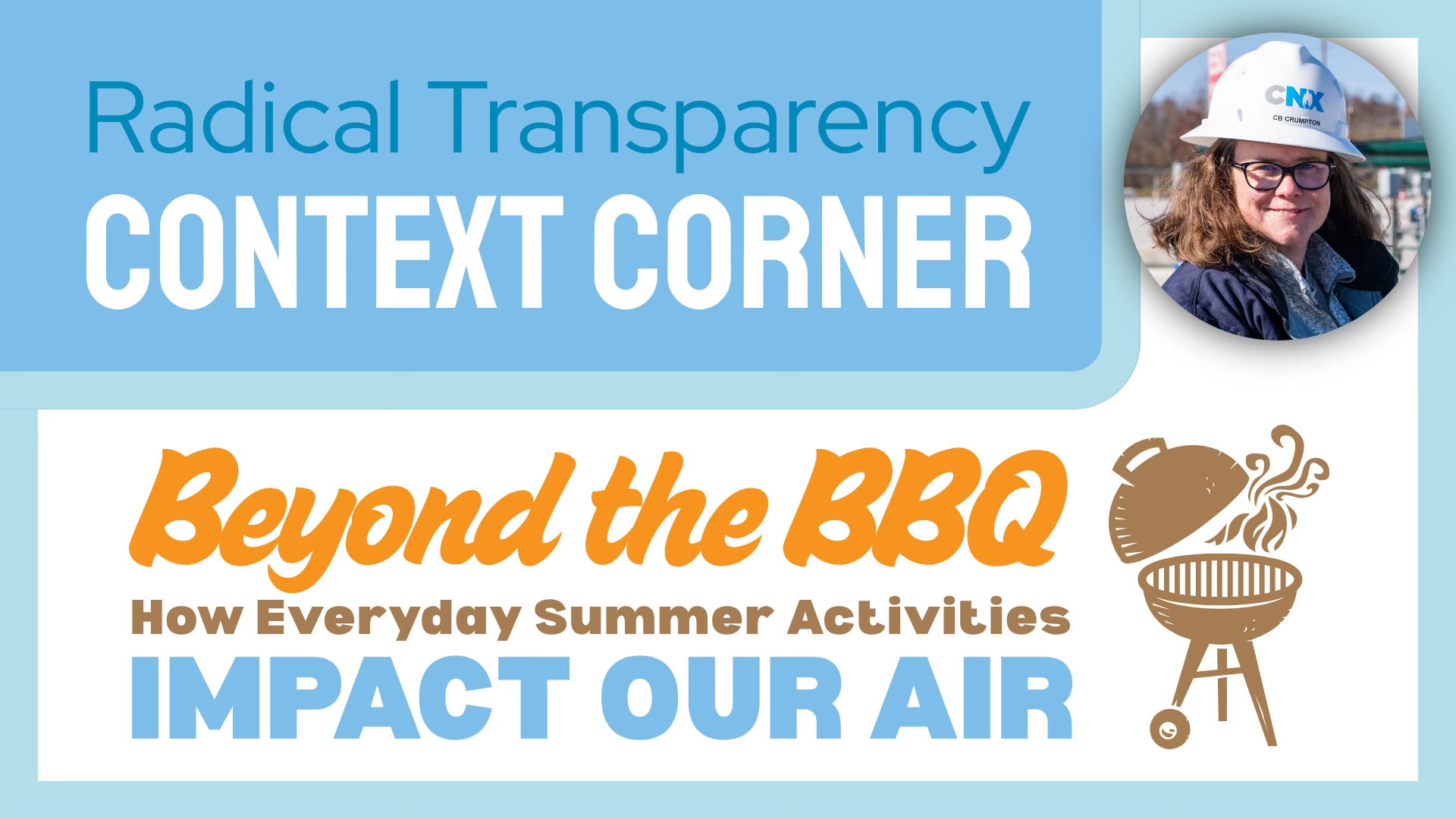Beyond the BBQ: How Everyday Summer Activities Impact Our Air
Context Corner Edition 13
July 3, 2025

By Carrie Crumpton, CNX Vice President of Environmental Strategy
Memorial Day weekend marked the unofficial start of summer, prompting many of us to gather to honor those who lost their lives serving in the United States Armed Forces. These observances—memorial services, concerts, and parades—often conclude with an all-American tradition: firing up the grill and enjoying time with family and friends. This tradition extended to CNX’s dedicated weekend shift workers, who were on duty over the holiday at our MAM16 well pad and celebrated together by firing up a BBQ charcoal grill on site during two separate shifts.
While the charcoal grill was cooking up delicious food, air monitors on the site captured its impact on PM2.5concentrations. The hourly PM2.5 graph for MAM16, available on the Radical Transparency website, shows spikes in PM2.5 concentration on May 26, 2025, that directly align with the charcoal grill’s use.
The investigation into these spikes led the CNX team to realize that the charcoal grill was the source and prompted discussion about what other typical summer activities we enjoy could lead to increases in PM2.5. While Context Corner articles have often been used to answer questions about the Radical Transparency Program, this time I have a question for you.
Have you ever used a charcoal grill, or made s’mores over a wood fire?
If so, you’ve seen the smoke rising from the coals or logs. While it adds flavor, that smoke also releases PM2.5and other pollutants into the air we breathe. At MAM16, we observed that even one small charcoal grill used to cook hot dogs for a crew can cause a noticeable increase in PM2.5. Now, imagine how many grills were fired up across the country over Memorial Day weekend, and how many more will be used this Independence Day weekend and throughout the summer.

Ironically, in the U.S., cooking over charcoal is now a leisurely weekend activity—an enjoyable tradition tied to barbecues and social gatherings. However, in many parts of the world, open-fire cooking remains a daily necessity driven by energy poverty.
This contrast highlights a stark global disparity: where Americans grill for fun, millions elsewhere must cook with wood, dung, or charcoal indoors, often without proper ventilation.
These traditional methods release harmful smoke and pollutants, contributing to respiratory illnesses, eye damage, and other health issues. We should pause to recognize the advantages of living in a country with abundant, clean, and cost-effective oil and gas.
The global health benefits of replacing open fires with basic propane stoves or grills would be staggering. Scientific data clearly show that increased use of oil and gas products correlates with lower mortality rates from air pollution.1
The U.S. is one of the largest consumers of energy per capita, and its energy mix is heavily weighted toward the use of oil and natural gas. Yet, the negative impacts to human health related to environmental risks, including air pollution experienced by U.S. citizens, are among the lowest in the world.2
As we contemplate the data on emissions from everyday summer activities compared to the relatively low impacts from our natural gas production pads, we are struck by one of the more misleading claims we hear from some groups and individuals: that natural gas production significantly harms human health through air pollution. Those opposing natural gas production and use often ignore the tradeoffs involved if their goal is to truly enhance human well-being.
We have the data—so what more can it tell us, beyond even the effects of natural gas development? We are actively monitoring and expect to see air quality impacts from charcoal grilling, regional fireworks, and, more recently, drifting smoke from Canadian wildfires. We are even watching for potential impacts of the Saharan Air Layer—the mass of dry, dusty air from the Sahara Desert that moves over the tropical Atlantic each year.
Look for more on these summer observations as we continue to review our monitoring efforts.
1 WHO Global Health Observatory data repository and EIA.
2 Based on data provided by EIA (World Energy Balances 2022) and IHME (Global Burden of Disease 2019).
Latest Context Corner:



